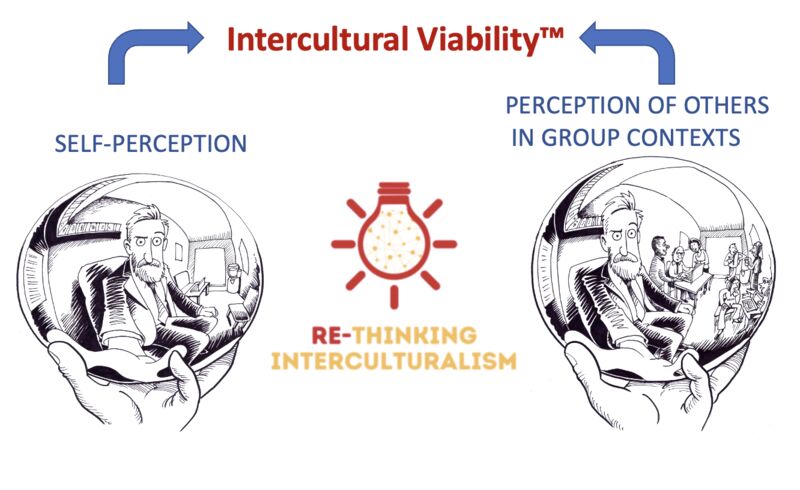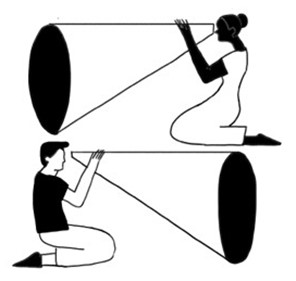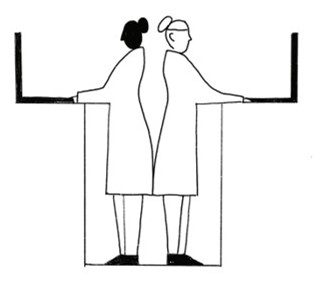The Intercultural Viability Indicator

What is Intercultural Viability?
The probability that a group can successfully adapt to unknown future changes in social environments – changes that include new combinations of diverse people who are expected to collaborate, integrate and innovate.
In a nutshell, what does the Intercultural Viability Indicator (IVI) do?
The IVI is unique in answering two fundamental questions for organizations today:
- How relatively well are we doing in creating a climate of respect for diversity?
- How can we increase the probability of developing more adaptive and innovative relationships among colleagues that will serve us in the future?
How the IVI Works
Respondents complete a 15-minute online survey. Researchers analyze the results of a group (not individuals), using proprietary algorithms to generate a report that is presented in an interactive session.
Who Developed the IVI?
The Intercultural Viability™ Indicator was co-developed by Milton J. Bennett, Ph.D. of Bennett Intercultural Development, LLC (www.idrinstitute.org) and David Trickey of TCO Srl (www.tco-international.com).
What Does the IVI Have to do with The Business of Race?

When we interviewed more than two-dozen business professionals for the book, one of those professionals, Chief Diversity Officer for MassMutual, shared that she used a tool called the Intercultural Development Inventory (IDI) with MassMutual’s executive team.
The IDI was developed by Drs. Mitch Hammer and Milton Bennett. The IDI (not to be confused with IVI, which we will return to in a minute) measures intercultural competence – the ability to shift perspective and appropriately adapt behavior to cultural differences and commonalities. It measures where you think you are, and where you actually are on a cultural competence continuum. The Chief Diversity Officer we interviewed described the behavior measuring tool in depth so we included her interview in Chapter 13 of The Business of Race: Discovering Your “E” and Measuring Its Impact.
A Conversation with Dr. Milton Bennett
As McGraw-Hill finalized The Business of Race for publication in 2021, we reached out to the numerous researchers whose work we cited in our book. Dr. Bennett was one. He graciously read Chapter 13 and in a few exchanges (zoom call, phone call and email) provided us with feedback about what we’d written.
Specifically, Dr. Bennett shared the history of his co-development of the IDI and his current work with the IVI – the topic of this blog post.
IDI and IVI

Dr. Bennett says the IDI measures individuals not groups. It is limiting because the group (teams and organizations) cannot be measured solely and simply by the sum of individuals. If a company seeks to measure the intersectionality of individual intercultural competence and the organization, the IDI doesn’t get you there.
- “After many years,” he told us, “I have finally developed a diagnostic measurement based on the DMIS (the Developmental Model of Intercultural Sensitivity first published in 1986) that is designed to work for groups. It is called the Intercultural Viability Indicator, and I think it may be one good measurement of Equity, as you discuss it.”
- The Intercultural Viability Indicator is able to parse out in metric form how much of the cultural insensitivity is associated with individuals and how much is institutionalized. This is a much more accurate measure of organizational effectiveness in the area of “otherness.” This type of measurement granularity is very useful in determining the next steps for evolving the institution – (how much offering is for individuals, how much for the group, how much for policy).

The IVI uniquely assesses synergistic group potential, not just an average of individual qualities.
- It makes a prediction about future ability, not just a statement about current competence.
- And it directs resources towards developing relationships, not just reducing bias or prejudice.
- In sum, the Intercultural Viability Indicator (IVI) is a measure of the relationship (intersectionality) of individuals to the group. The IDI does not quantify this. That’s the challenge Dr. Bennett has with how people are using the IDI, which he co-developed based on his original research of 1986. It is not designed to do what people are claiming it does, which is measure the relationship (intersectionality) of individuals to the group.
Why Write About It Here?

One day, we will release a second edition of The Business of Race. In the three years since its publication, we’ve learned a lot and like any new edition of a book, we will update what we’ve learned. Sooner rather than later, however, as we learn and grow in real time, we wish to share that growth with those who have read the book. Similarly, we’ve updated our learning by reaching out to other professional academics and researchers.

Also, we facilitate learning sessions using The Business of Race as a foundational text. In those environments, participants regularly ask us about measures.
Visit the “Measurements” category of our Blog for more bi-directional sharing and learning.

